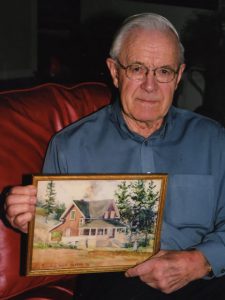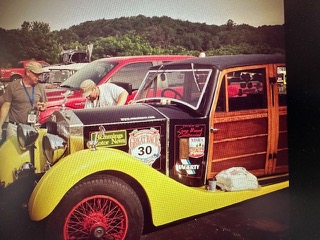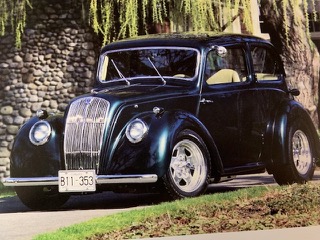Another Heritage House Fills the Trash Bin! (Part one)

Not far below me off McIver Road in Glenrosa, I could hear the drone of an orange track hoe. The operator systematically scooped up splintered wood, plaster and other construction debris with its articulated shovel and dumped it in a large blue bin. I realized then that the familiar green roofed house with the tall brick chimney that was nestled in the still standing fir trees was gone! A deep sadness overwhelmed me at that moment. The 97-year old wooden heritage house with the veranda had disappeared. Nothing was left behind to indicate that it had ever existed.
Several years had passed since the last occupants left. The land developer who purchased the large property boarded the windows and doors. It was only a matter of time before that building and the surrounding sheds would meet their doom, and their time came that first week of December 2009.
 Ross Gorman’s parents, Milton and Eva Gorman, who were living on a farm in Armstrong at the time, heard about the house and were interested in taking a look at it. One day Milton mounted his bicycle and rode through Vernon, then along what was then a very rough, twisty and narrow trail along the west side of Okanagan Lake (Westside Road was still under construction), south to Glenrosa. His bicycle acquired four flat tires along the route. This was no small feat, and Milton must have been in great physical shape to endure such a journey. Robert McKellar moved to the Glenrosa area in 1908 and built a log cabin. The Gospel Assembly, also known as the Plymouth Brethren, held their first meetings in his home. Around 1912 he constructed the two story wood frame house with the wrap around front porch, for his sister Mrs. Oliver and her two daughters. They lived in California and when they arrived to take a look at the house, McKellar’s sister remarked that she had no desire to live in the bush, and promptly returned to California. The house then stood vacant for a couple of years.
Ross Gorman’s parents, Milton and Eva Gorman, who were living on a farm in Armstrong at the time, heard about the house and were interested in taking a look at it. One day Milton mounted his bicycle and rode through Vernon, then along what was then a very rough, twisty and narrow trail along the west side of Okanagan Lake (Westside Road was still under construction), south to Glenrosa. His bicycle acquired four flat tires along the route. This was no small feat, and Milton must have been in great physical shape to endure such a journey. Robert McKellar moved to the Glenrosa area in 1908 and built a log cabin. The Gospel Assembly, also known as the Plymouth Brethren, held their first meetings in his home. Around 1912 he constructed the two story wood frame house with the wrap around front porch, for his sister Mrs. Oliver and her two daughters. They lived in California and when they arrived to take a look at the house, McKellar’s sister remarked that she had no desire to live in the bush, and promptly returned to California. The house then stood vacant for a couple of years.
Gorman looked the house and property over, and after returning home he and Eva discussed whether to buy the acreage. They decided that it would be a good place to raise their family. An agreement was reached between Robert McKellar and Milton Gorman and the house with twenty acres was sold to the Gorman’s with the Armstrong property taken as part payment.
It wasn’t until 1914 that Milton, Eva, their daughter Helen and four-month-old son Bert would make the move to Glenrosa. Good friends of Eva, even before she married Milton, Grieve and Luella Elliott moved from Alberta and were the first residents of the McKellar from 1912 to 1914.
In 1917, Eva gave birth to their third child John. On April 7th, 1921 Eva was in labour with her fourth child Ross. Milton rode his horse to Trepanier to summon Dr. Buchanan for the birth. The doctor was traveling on foot, and they had taken such a long time that he barely made it in time to attend Ross’ birth. John and Ross would found Gorman Brothers Box Company in 1951.
Milton and his family raised chickens, pigs and about ten milk cows that roamed freely throughout the countryside. As there were no fences in the area in those days, Ross’ task after school was to hunt for the cattle and herd them home. Their property included a two-acre orchard with mostly prune and cherry trees. However, the cherry crop didn’t flourish well because there was no irrigation system available.
To augment their income, the oldest son Bert raised chickens for meat and eggs. Eva traded her surplus currants, gooseberries and butter for groceries at Capozzi’s store in Kelowna. Sometimes in the fall, Milton hitched the team of horses to the democrat and traveled three miles to the town of Westbank and picked fruit for several of the local orchardists.
For groceries and to mail letters, they traveled up Glenrosa Road to the Gates house, one of only a handful of houses in the area. The children attended the one-room Glenrosa School, with grades one to eight.
In the winter time the children were adept in getting around on home made skis. For fun they sledded on the nearby hills. On several occasions Milton would boil taffy candy in a cast iron cauldron over a wood fire outdoors. Pulling the crystallite taffy and then eating it entertained the young people.
The icebox was the precursor of the modern day refrigerator. Fifty-pound ice chunks were deposited into a bin on top of the icebox that kept the dairy products, produce and groceries cold in the compartments below. During the winter it was customary for local families to cut ice blocks from the local ponds and store them for use during the coming year. The Gorman family cut their ice blocks from Hardy’s pond, just south of where Gorman Bros. Sawmill is today, and hauled them by horse and sleigh to a shed on the farm. The ice was covered with a foot or so of sawdust to insulate them from the warm weather of spring and summer. On average, the ice would last until mid September.
When the hot summer season arrived there was an abundance of chores for the children to do. Nellie and Bessie, the two work horses were put into service to pull the hay mower, rake and wagon that brought in each year’s hay crop. The hay was stored in the barn about 300 yards from the house. It was long, hard, dusty work for the Gorman family. The fruit had to be picked and sorted as well. Then the kitchen became a canning factory to put up all the fruit and vegetables that would be
consumed during the winter months. When the children had some free time they rode horses around the countryside, but Eva forbade them to go down to the lake, because she was afraid of water. Consequently, the children never learned how to swim.
The house had no insulation in the walls or ceiling and became very hot in the summer (and cold in the winter). The three boys moved their beds out on the porch to keep cool during those summer nights. One year they even braved staying out for an entire winter. To alleviate the shock of climbing into a freezing bed, rocks were heated on top of the heater in the house, and then stuffed in the beds. Despite this temporary reprieve, “It was cold,” Ross, remarked with a chuckle.
Electricity was not available in Glenrosa, so Bert and John used their ingenuity to develop a power generator, using a one-cylinder, one horsepower engine and ran one wire into the house to power a light bulb. That was a vast improvement over the kerosene lights. Another living improvement was to convert one of the upstairs bedrooms into a bathroom that actually had a flush toilet! This was a welcome replacement for the ubiquitous outhouse.
In 1944 Eunice, who would become Ross Gorman’s wife, came from Vancouver for a visit. A flustered Eva greeted her. She declared that she was alone at home and had to fight a fire in the attic that morning. A chimney fire caused the tin inlet cover plate, with a picture of an Indian chief on it, to pop off the chimney. Sparks and flames spewed into the attic, starting the fire. For a few panic stricken minutes, as she fought to extinguish the small blaze, her only thought was that the house would burn down and that she would have no place to entertain guests for supper that evening!
Just after World War II had ended in 1945, Milton and Eva Gorman decided to move to the property they had purchased in 1920, where Ross and Eunice live today. There was a large orchard and irrigation was available. They built their house that Helen Gorman subsequently lived in with her mother. It remains standing to this day, near Gorman Brothers Lumber Ltd.
Shortly after Helen Gorman passed away in November 1997, Eunice was cleaning the attic of the old house and found a unique framed water colour painting of the original McKellar house with the painter’s name “Archie Murchie September 14, 1916” signed at the bottom. She was elated to discover that a painting even existed of the house, let alone painted by a renowned photographer for the Canadian Pacific Railroad. The painting now proudly hangs in Ross and Eunice’s home.
“Not knowing any better,” Ross reflected about the McKellar house, “we thought the house was very big and had lots of room, but by today’s standard,” he continued, “the rooms were very small.”
The Gormans sold the McKellar house to Bob and Stevie Lynn, and a new era for the McKellar house began.




